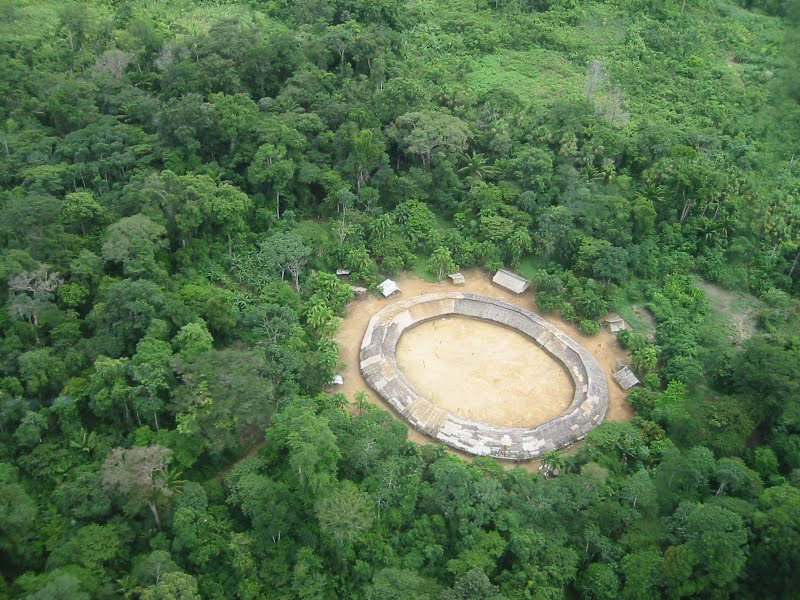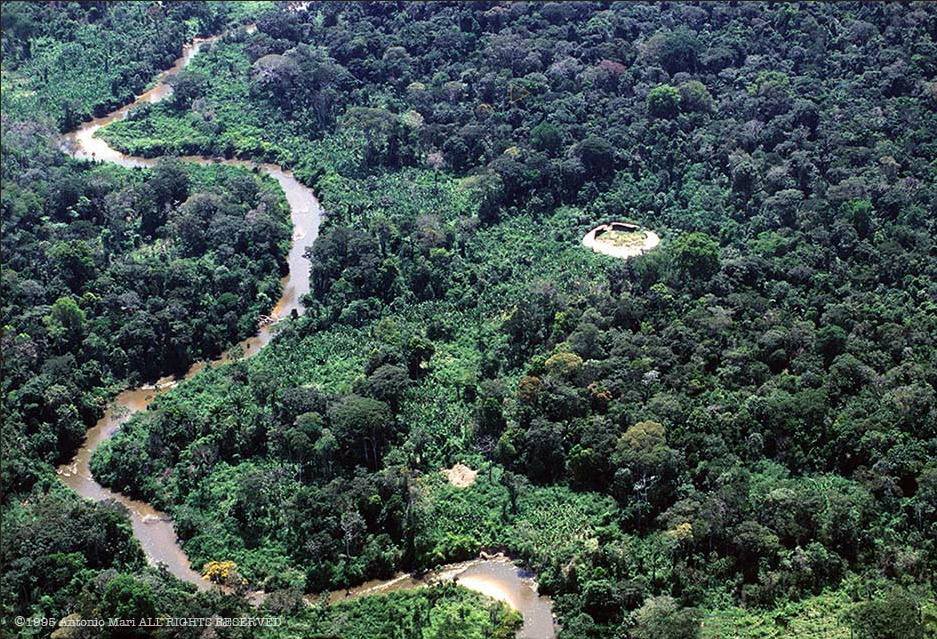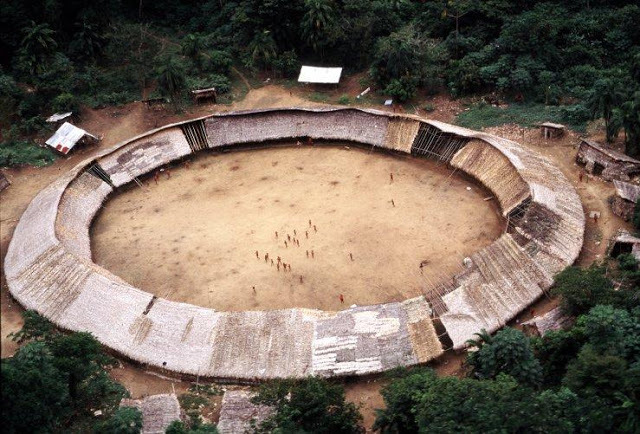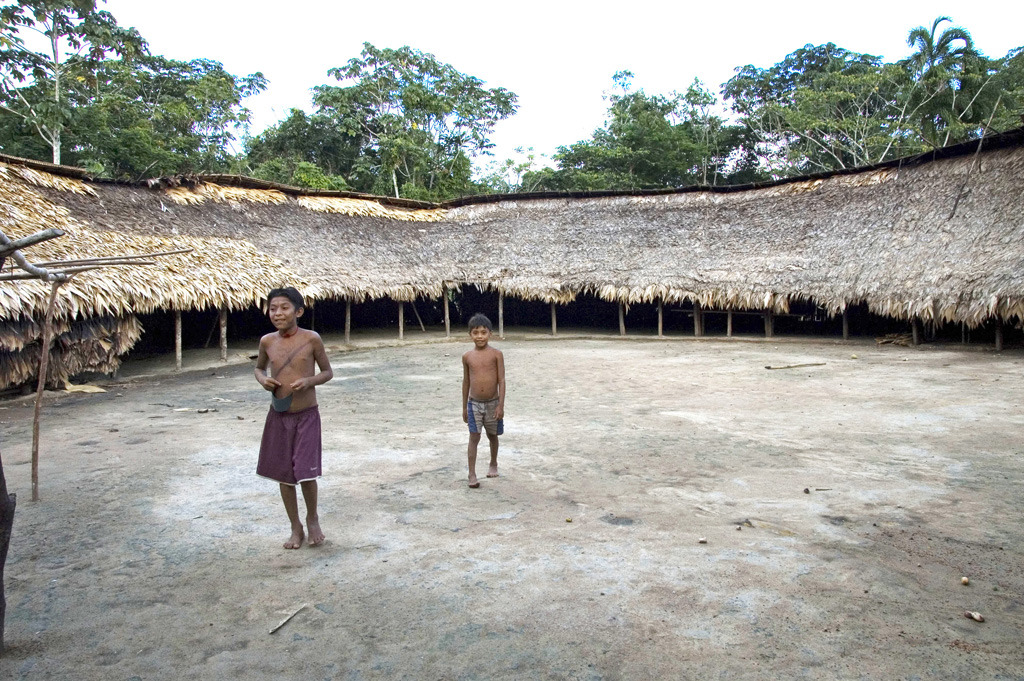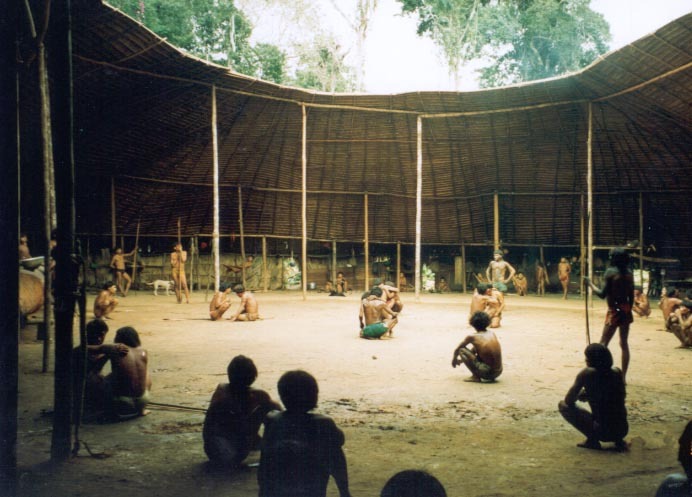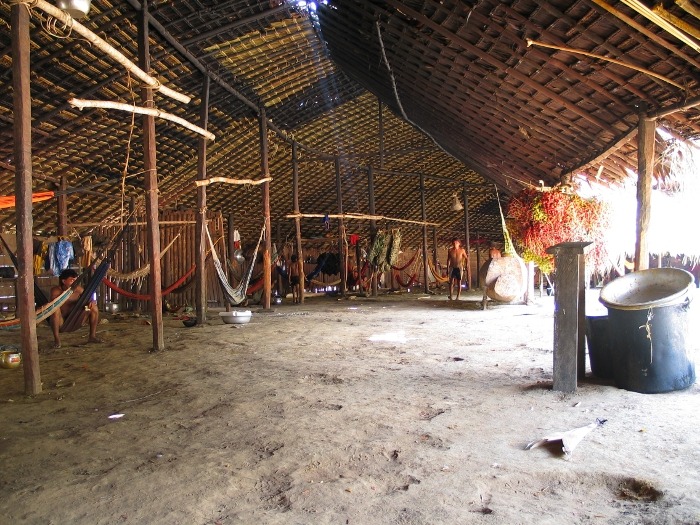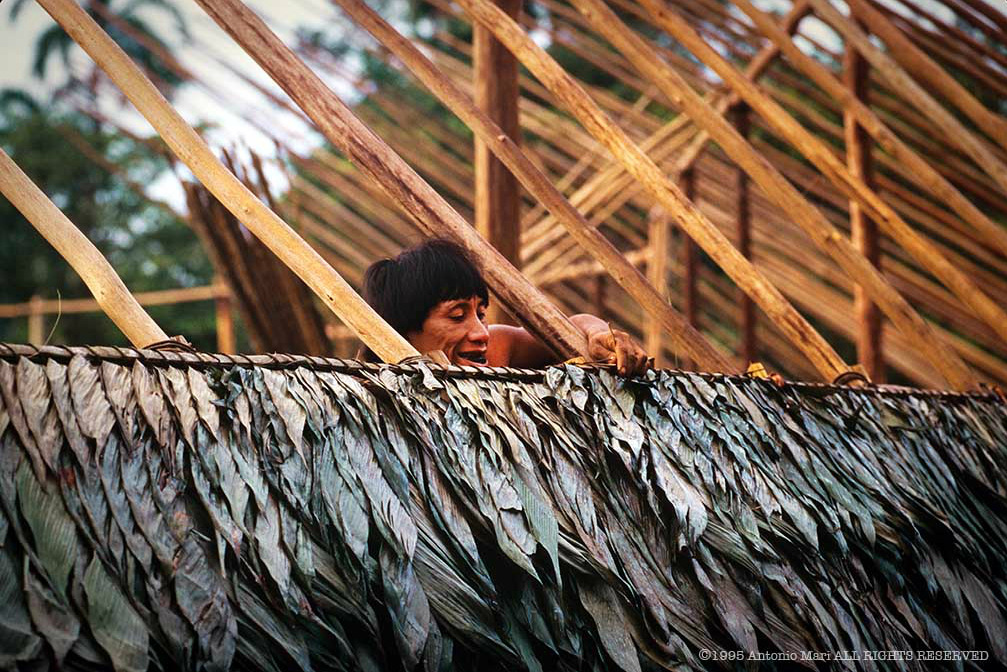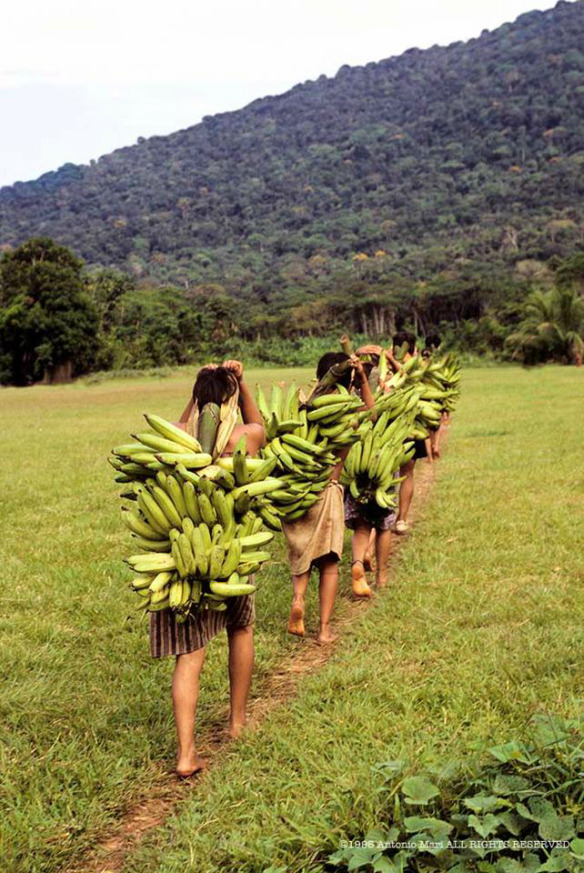V 06 |
Yanomami shabono |
type |
|
place |
|
population |
The Yanomami divide the jungle into concentric circles. The smallest of these is the 15-60 metre diameter shabono, where close families are grouped in their own areas with their hammocks among a community of 40-300 people. The people within a shabono constitute an economic and political unit, and will typically marry within their kin group (polygamy is common), but also maintain contacts with other yanomami communities within 1-10 days’ walking distance.
The oval-shaped shabonos are built on hard wood frames bound together with lianas and roofed with palm leaves. They can have an internal height of 5-6 metres and usually have to be rebuilt every 1-2 years due to insect damage, torrential rain and gales. Shabonos are frequently burnt down when they are abandoned. Building a new shabono is man’s work, but each family only builds its own wedge of the oval, which together make up the whole dwelling place.
A shabono has a roughly 5 km circular territory around it used for growing crops, fishing and hunting for semi-nocturnal animals. The next largest circle is used for individual hunting expeditions and daily foraging. The next, and largest circle, is between 10 and 20 kilometres from the centre and here the yanomami live not in a shabonos but in temporary dwellings where they spend about a third of the year on group hunts and foraging trips.
